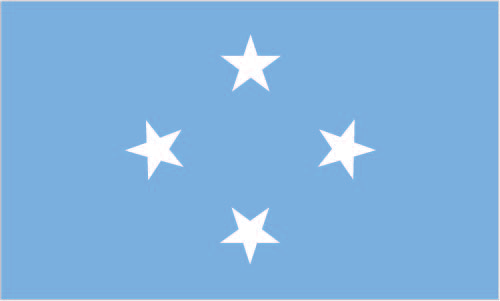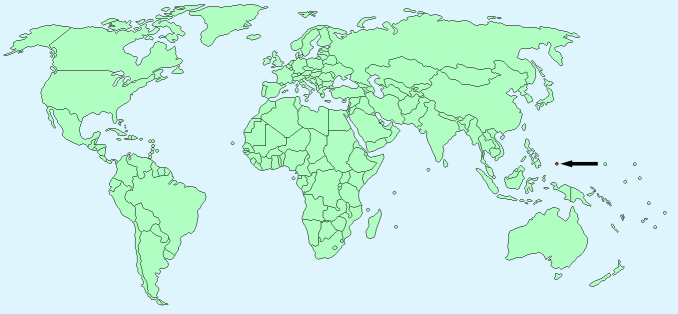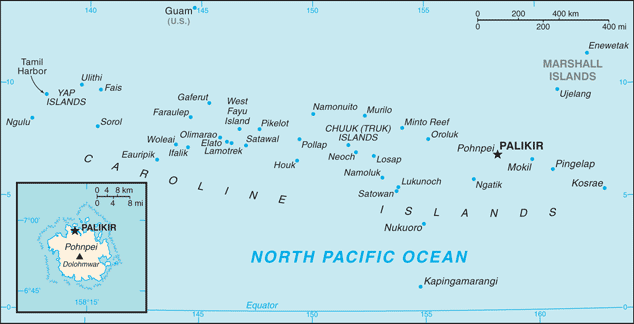Federated States of Micronesia


Continent – Australasia, Oceania
Region – Pacific Islands
Size – 702 km²
Geography – collection of islands, volcanic islands and atolls
Language – English (official), indigenous dialects
Religion – Roman Catholic 54.7%, Protestant 41.1%, other 4.2%
Monetary Unit – United States Dollar
Natural Resources – timber, marine products, deep-seabed minerals, phosphate
Agriculture – taro, yams, coconuts, bananas, cassava (manioc, tapioca), sakau (kava), Kosraen citrus, betel nuts, black pepper, fish, pigs, chickens
Industry – tourism, construction; specialized aquaculture, craft items (shell and wood)

Neighbouring Countries – None
Population – 105,681 (2014 estimate)
Population Growth Rate – -0.42%
Average Life Expectancy – 72.35
Capital City – Palikir (7,000)
Highest Mountain – Dolohmwar (791m)
Longest River – Very small rivers only mainly on Pohnpei
Climate – tropical – hot all year round 26°C – 32°C
Yearly Rainfall – 290 cm (approx) mostly May to October
Plant Life – grasses, coconuts, taro, breadfruit, bananas, yams, lemons, sugarcane, orchids, ferns, mosses, hibiscus, eucalyptus, mangrove, pandanus
Animal Life – no native land animals, a few bat species
Bird Life – doves, owls, passerines, scrub fowls, heron
Marine Life – Porpoises, dolphins, whales, tuna, surgeonfish, clownfish, sailfish, puffer fish, butterfly fish, grouper, barracuda, mackerel, marlin, mahi-mahi, shrimp, krill, crab, seahorses, manta rays, sharks, jellyfish, starfish, and sea urchins
Harvard Reference for this page:
Heather Y Wheeler. (2015). Federated States of Micronesia. Available: https://www.naturalhistoryonthenet.com/Facts_Figures/Country_Facts/micronesia.htm. Last accessed Tuesday, July 19, 2016
Facts and Figures Pages
